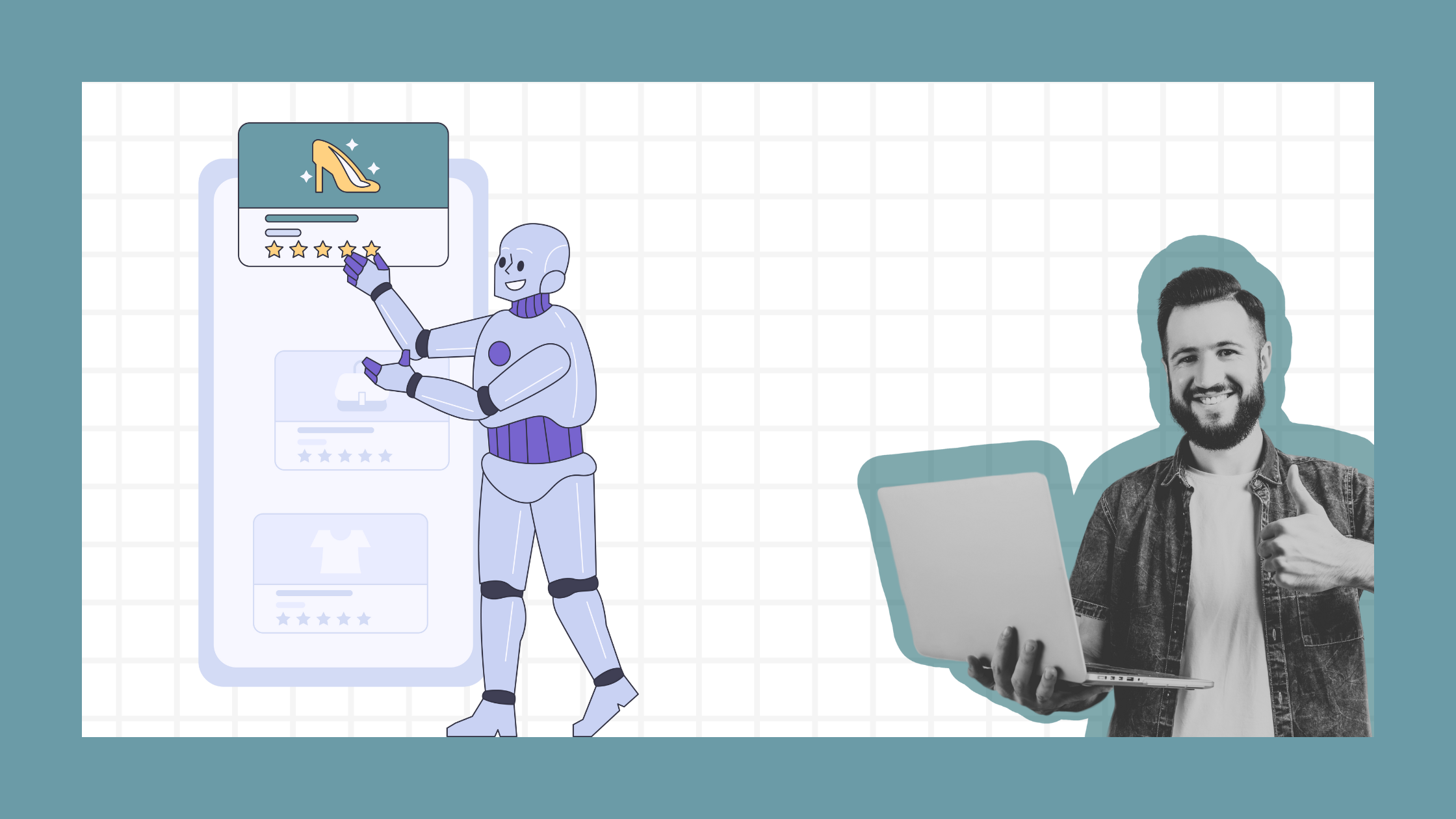From brick-and-mortar to e-commerce, businesses have been running successfully all these years by building their foundation on just a question — “What do customers want?”
In the case of physical stores, products of good quality, stores with sufficient inventory, convenient locations, interactions from the staff, etc, were some of the primary things customers considered as a reason to frequent.
All of this with the addition of faster deliveries, efficient returns, effective post-purchase engagement, etc, started as a special feature or USP of brands as the gradual shift to e-commerce took place but since then has become a necessity in customer expectations.
So, coming back to the question, “What do customers want?” Stands for the increasing and ever-changing customer expectations with your business and the answer of meeting or rather exceeding these expectations stands for what one would call ‘a great customer experience’.
The Need To Focus On CX In Today's Business Landscape
Customer demands are never the same. However, what’s been the same in the recent past is businesses increasingly prioritizing CX to facilitate repeat purchases.
45.9% business professionals rated CX as their priority and thereby are consistently investing more in improving it.
That brings us to the #1 reason — To stay in the competition.
While product quality might have been the criteria two-three years ago, it’s no longer the reason why customers choose to do business with you. Today, it’s all about who offers the best customer experience. So, if you’d like to stay noticed by your prospective customers, you have no option but to put your focus to improving customer experience.
Not just your peers, but even customers will agree with it. CX makes or breaks customer loyalty.
According to PwC, 1-in-3 customers will leave a brand after just one bad experience, making reason #2 — CX acts as the key differentiator between today’s brands and when done right, can become a competitive advantage.
Well, if customers want something and your competitors are adhering to it then, there must surely be something beneficial for both parties. And that’s reason #3 Improved CX = Increased loyalty and revenue.
Think about it. It’s not rocket science! You give your customers something they want and that impresses them to the extent that they want to keep shopping with you. With loyal customers at hand, you can create opportunities to improve revenue by making them spend more and cut down costs by lowering acquisition rates.
Just like E-commerce, CX is also transforming while still being an integral part of the shopping channel and innovations can’t be left out. Why? Because of the scale at which customers are shopping online, you need to keep innovating to stay ahead of the curve, and not to forget, customer demands are ever-increasing!
The Evolution of Customer Experience and Key Drivers of this Transformation
As an e-commerce merchant, understanding the evolution of e-commerce and the key drivers behind it can be crucial for you in remaining competitive and thereby seeking success in the modern marketplace. So, let’s delve into the evolution of customer experience (CX) and the key drivers of this transformation:
- Traditional customer experience vs. modern CX – The primary difference between traditional and modern approaches to customer experience is embracing digital transformation and prioritizing customer-centricity. Businesses that do that can differentiate themselves and build stronger relationships with their customers.
- Changing consumer expectations and behaviors – Understanding and adapting to changing consumer expectations and behaviors is essential for businesses seeking to deliver exceptional customer experiences.
- Shift from transactional to relationship-based interactions – The shift from transactional to relationship-based interactions reflects a strategic evolution in how businesses approach customer engagement. By prioritizing it, businesses can cultivate loyal customers who become advocates for their brand and drive sustained growth.
Understanding the evolution of CX to its current state or ‘trend’ helps you stay relevant and survive among a multitude of competing businesses. But knowing what’s going to come in the future gives you a head start in the rat race with your competitors.
To gain that head start and thereby get enough time to optimize things, here are some insights on what the future of customer experience will look like and how you can adapt to it.
Future Trends in Customer Experience
Hyper-personalization and predictive analytics
We’ll start with a trend that is slowly moving away from being called a ‘trend’ to becoming a standard that all e-commerce businesses would like to get hold of in the coming months, particularly before peak season times as a resort to improve their sales numbers.
If you look at it, hyper-personalization is just an advanced way of doing personalization using technologies that keep taking e-commerce by storm to create highly relevant experiences by understanding customer behavior in real-time.
Currently and in the future, hyper-personalization is about using AI, data analytics, and automation
Here’s an in-depth look at how it works:
- Make use of marketing automation tools that not only provide you with a goldmine of data in the form of browsing and purchase behavior, shopper demographics, and preferences (search queries) but also help you with predictive analytics in the form of real-time reports and insights in the form of predicting which products a customer is likely to purchase, forecasting trends, identifying potential churn risks, etc. With these actionable insights, you can identify distinct customer personas and understand exactly how you can cater to them.
- With personas identified, the next step is to customize the direction of personalization based on the stage of repeat purchase funnel they’re in. For instance, personalized product recommendations for customers if they are still on the lookout, targeted campaigns and personalized discounts if they have items added to their cart, proactively addressing issues during order tracking, etc.
- As businesses strive to deliver personalized experiences, they must also navigate complexities in the form of transparent data collection, secure privacy regulations, and most importantly, maintain customer trust while delivering personalized experiences.
TLDR: The future of CX with hyper-personalization is promising, thanks to continuous advancements in technology. Businesses that can navigate and take hyper-personalization initiatives while upholding ethical standards are the ones that are poised to thrive.
Integration with AI and automation
The idea of integrating Artificial Intelligence (AI) and automation into an e-commerce system is already in the talks and the basic opinion has been that these technologies promise to bring unprecedented efficiency and innovation and that businesses must adapt to these changes.
Automation AI represents the blend of automation tools with AI to create a system that can not only automate tasks but also learn and improve over time. Here are some ways in which this integration or ‘intelligence automation’ can potentially help transform the CX:
- Chatbots and Virtual Assistants: AI-powered chatbots and virtual assistants will play an inevitable role in providing instant support and assistance to customers throughout their shopping journey. These chatbots will automate routine customer service tasks such as order status inquiries, return processing, facilitating transactions, etc., and free up human agents to focus on more complex issues that require human intervention.
- Supply Chain Optimization: AI and automation will play a critical role in optimizing e-commerce supply chains, from inventory management and demand forecasting to order fulfillment and logistics. With the help of predictive analytics, you can anticipate demand fluctuations, optimize inventory levels, and orchestrate fulfillment operations to ensure timely delivery and minimize costs as a bonus.
TLDR: In a rapidly evolving marketplace, stagnation is not an option. Businesses that fail to adapt to technological advancements risk falling behind. Therefore, you MUST make use of intelligent automation to improve efficiency, accuracy, and offer more personalized experiences.
Final Word
The evolution of customer experience (CX) has been nothing short of transformative, shaping the way businesses engage with their customers and driving new standards of excellence in the digital age.
As we look to the future, the value of CX will only continue to grow, with hyper-personalization, seamless omnichannel integration, and relentless innovation at the forefront of delivering exceptional customer experiences.
By embracing these trends and prioritizing customer-centricity in all aspects of their operations, businesses can forge deeper connections, foster loyalty, and unlock new opportunities for growth and success in the dynamic landscape of tomorrow’s e-commerce marketplace.
An important phase of the CX that is also the most difficult is the post-purchase. This is because it represents the final touchpoint in the customer journey and any incident that happens during this phase can be the last thing your customers remember about your brand. Therefore, the impact of it on your satisfaction levels and repeat purchase rates is imminent.
For businesses that have been looking to optimize their post-purchase CX, it is time to invest in post-purchase technology that comes with ways to foster meaningful connections and ultimately drive loyalty (and revenue).



